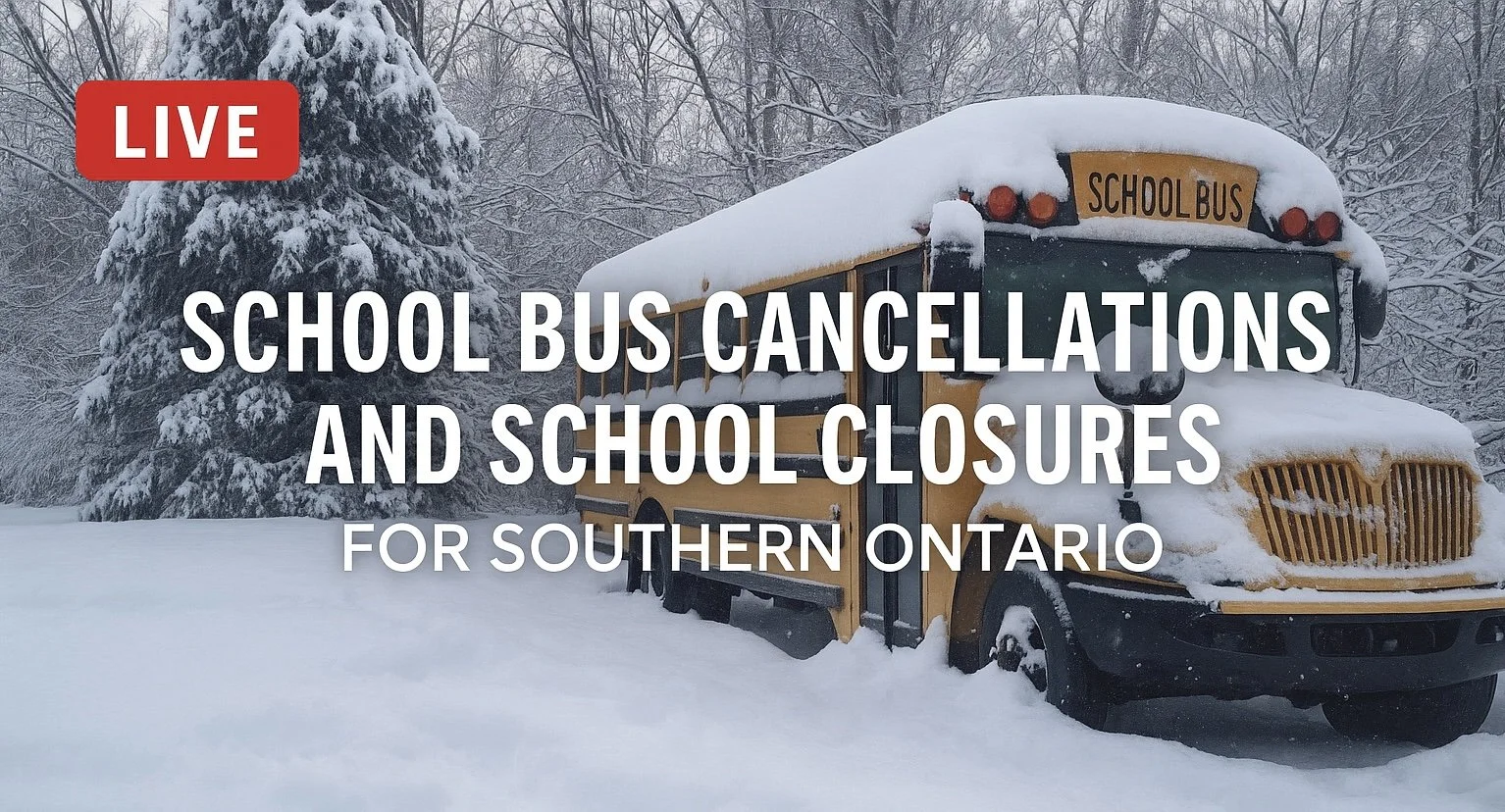Will It Ever End? Squalls Could Bring Up to Another 40cm of Snow by the End of Friday to Parts of Southern Ontario
/Are you enjoying winter yet, Ontario? ❄️ It feels like we've been stuck in an endless cycle of snow, with relentless snow squalls hammering the snowbelt regions.
Even outside the snowbelts, much of Southern Ontario joined in this week as a major winter storm dumped over 20 cm of snow across the region overnight into Thursday morning.
And the snowy pattern isn’t letting up anytime soon. More lake effect snow is on the way to end the week, followed by a potentially significant snowstorm this weekend.
The lake effect machine is expected to fire back up Thursday evening, becoming more organized overnight into Friday morning. Current indications suggest a strong snow squall will develop, targeting the Bruce Peninsula and stretching into parts of Simcoe County.
While squall activity should begin to wind down by Friday afternoon, areas that have already been hit hard this season—such as Orillia, Midland, Wiarton, Lion’s Head, and Tobermory—could see another 15 to 25 cm of snow. If the squall locks into place for an extended period, localized totals of up to 40 cm are possible.
HOURLY SNOWFALL RATE/intensity - MAP FROM WEATHERBELL
As of early Thursday evening, bands of lake effect snow are already forming off Lake Huron and Georgian Bay. These will continue to shift around throughout the evening, delivering bursts of heavy snowfall to different areas.
Right now, it looks like the heaviest snowfall will be concentrated across the Bruce Peninsula and along the southeastern Georgian Bay shoreline, including Collingwood, Barrie, Angus, and Keswick. Additional, weaker bands may impact regions east of Lake Huron, from Owen Sound to Goderich.
By midnight, models suggest that a narrow but intense squall could set up, stretching from the Bruce Peninsula, over Georgian Bay, and into Barrie. However, there’s still uncertainty about its exact strength and how stationary it will be overnight. Some models show it drifting north toward Midland and Orillia, while others keep it in place longer.
If the squall aligns just right, it could connect with both Lake Huron and Georgian Bay, allowing it to tap into additional moisture. This could make it stronger than expected, potentially bringing more snow to Barrie than initially forecasted. Right now, Barrie sits right on the edge between significant snowfall and minimal accumulation.
HOURLY SNOWFALL RATE/intensity - MAP FROM WEATHERBELL
By Friday morning, the squall will likely continue hammering the Bruce Peninsula and Simcoe County but may have shifted slightly north, putting Tobermory, Midland, and Orillia in the bullseye for heavy snow during the late morning.
Depending on its strength, the squall could even extend into portions of Durham and the Kawartha Lakes at times. This squall may remain stationary for several hours, with snowfall rates reaching 5-10 cm per hour.
It won’t take long for roads to become impassable, especially along the Highway 400 and Highway 11 corridors. Plows will struggle to keep up with such intense snowfall rates, and whiteout conditions will make travel extremely dangerous. If you can, stay home—this is the kind of snow that can lead to major travel disruptions and accidents.
By early Friday afternoon, the squall should gradually weaken as winds shift and become less favourable for lake effect snow.
As with any lake effect event, snowfall totals will be highly variable, depending on where these narrow snow bands set up.
The hardest-hit areas are expected to be across the Bruce Peninsula, including Tobermory, Lion’s Head, and Wiarton, extending into Simcoe County in areas like Midland, Washago, and Orillia. These regions could see 15 to 25 cm, with localized totals near 40 cm possible in central Simcoe County, closer to Georgian Bay.
Surrounding areas—including Grey-Bruce, Huron, and Perth counties east of Lake Huron—could see 5 to 15 cm, though some spots may see little to no snow due to how localized these bands are. Southern Muskoka, portions of Kawartha Lakes, and Durham Region may also receive up to 5 to 10 cm in some areas.
The rest of Southern Ontario should see less than 5 cm of snow over the next 24 hours, as the lake effect snow stays confined to the snowbelt regions.
While the lake effect snow wraps up Friday, a much bigger storm could be on the way this weekend. A potential multi-day snowfall event is on track to begin Saturday, and continue into Sunday.
Right now, there’s still uncertainty regarding snowfall totals and the exact timing of the worst conditions, but early indications suggest that much of Southern Ontario—particularly Eastern Ontario and the Golden Horseshoe—could see 20-30 cm or more by the end of the weekend.
We’re waiting on the latest model data this evening and will have a preliminary forecast on this potential snowstorm later today or early Friday. Stay tuned!









